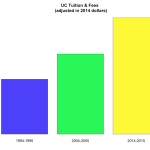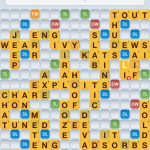Of all the books I read in high school to prepare for college, How to Lie with Statistics by Darrel Huff was, by far, the best. It’s actually not encouraging lying with statistics. Rather, it encourages you to think when you see a statistic, and question whether the data are presented in such a way that it leads the reader to a false conclusion. It teaches the kind of critical thinking and questioning authority that’s essential for success in academic research, and it’s written at a level that most high schoolers could understand.
Let me demonstrate with two small datasets: More »





